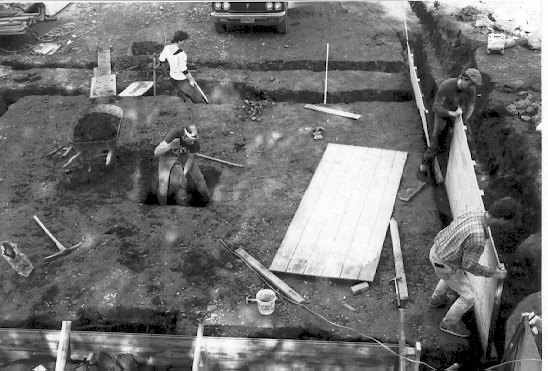Claude and I are currently examining and testing a Babylonian Radio. Technically speaking, it’s roughly equivalent to the GI Foxhole Radio of WW II. We’re thinking there’s a matching spark-gap transmitter, although this was clearly built as an interdimensional religious artifact, used for alpha/theta wave induction and Schumann Harmonics effects, similar to a Brane-Power amulet. Potentially, there’s no reason why we should not someday find an ancient SuperBeacon somewhere in the ancient ruins of Babylon.
We’ll soon publish our findings regarding ancient crystal radio technology. Don’t forget, they had heated indoor pools, plumbing, sewer systems, safety pins, fast-food shops, boutiques, department stores and gold-plating gear, to mention just a few, and jewelers today can’t come close to what secrets the ancients possessed!
I’ll explain some of the technical issues in an ancient radio:
1. Unless there’s a spark-gap transmitter somewhere nearby, the receiver isn’t used for ordinary communication; interdimensional? Undoubtedly.
2. There’s ample evidence that diodes were available to the ancients, plenty of them, including the great cyrstal diodes — germanium and pyrite. But why are they so great as radio signal detectors? Because they contain oxides — rust. Turns out anything, even a Gillette Blue-Blade single-edged razorblade will do the trick.
3. You’ll need something like a stick of graphite if you use a flattish rusty thing for your diode. If you plan to use a cat’s whisker — a hair-thin very stiff wire — to find the loudest part of the diode crystal, you’ll need a way to exert pressure on it, such as a bend in the wire, such as you’d see in an ancient brooch.
4. The capacitor is a cinch — all you need here are two sheets of gold foil, no longer available today, but commonly available in those halycon days of goldsmithing, and you’re in business. Simply place a sheet of thin paper-like stuff such as papyrus down on a table. Lay a pounded gold foil sheet, about 10″ x 8″, on top with one edge sticking slightly out; then another sheet of papyrus down on top of that. Then place a second foil sheet down on the paper, one edge sticking out the opposite way of the first gold sheet, allowing for connection to the circuit with a clip, also commonly available in the ancient world.
5. But what about the coil? It isn’t really needed for the radio effect. A simple air-wound open coil will do to “load” the antenna, given a long antenna and good ground connection; but to make quantum things happen, a coil really helps. The ancients made coils all the time — one of the most famous and popular designs for earrings and necklaces was the coil, and they’re still popular today. This one uses a copper coil wound on papyrus stalks.
6. If this were receiving man-made signals, there’d be some sort of speaker or clicker on it to register the transmitter’s signals, but there isn’t — therefore it’s extra-terrestrial technology at work here.
7. A transmitter would have been bone-simple to make in ancient times; there are dozens of ways a spark-gap transmitter could have been achieved during the iron or bronze age. In any case, the ancient crystal radio was not made to listen to, but to tune in to, for the purpose of contacting other dimensions and of course it would have been used as we now use the ammy or SuperBeacon.
Our next goal: find an ancient or extraterrestrial CQR amulet. Small scale requires industrialization to some degree. Miniature ancient radio? We shall see!!!
See You At The Top!!!
gorby


